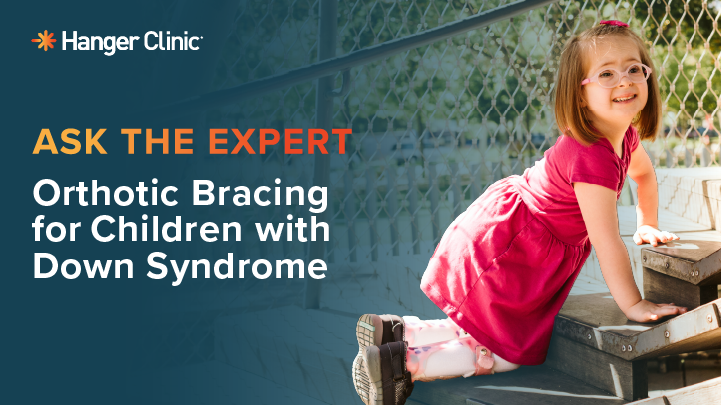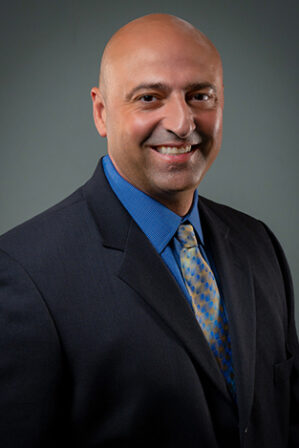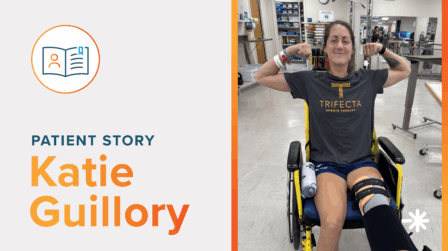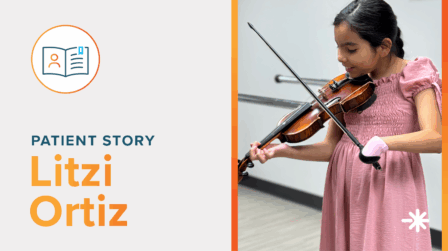Ask the Expert: Orthotic Bracing for Children with Down Syndrome

October is Down Syndrome Awareness Month—a time to celebrate the unique abilities of individuals with Down syndrome and highlight the importance of personalized care. At Hanger Clinic, we’re proud to support this community with orthotic solutions that enhance mobility and confidence. To share expert insight, we sat down with Hanger Clinic Certified Orthotist and Pediatric Specialist Marcello Girao, CO, to learn about bracing options, family involvement, and the importance of personalized intervention.
Marcello Girao, CO
Certified Orthotist, Hanger Clinic
Marcello is an ABC-certified orthotist at Hanger Clinic in Louisville, Kentucky. With over 30 years of experience in pediatric orthotics, Marcello is an expert in the treatment of Down syndrome with orthoses.

Marcello discovered his passion for orthotics early in life, inspired by watching his sister work as a pediatric occupational therapist. That early inspiration led him to focus on helping children from the start of his career. Now, with over 30 years of experience, Marcello shares what he’s learned about orthotic bracing and how it can support individuals with Down syndrome to move more comfortably and confidently.
How can orthotic bracing help children diagnosed with Down syndrome?
Children with Down syndrome often experience hypotonia (low muscle tone), ligamentous laxity (loose joints), and flat feet—all of which can impact walking, balance, and posture.
Orthotic bracing can make a difference by:
- Improving Stability: Braces like foot orthoses (FOs), supramalleolar orthoses (SMOs), or ankle-foot orthoses (AFOs) help align the feet and ankles, making walking more efficient.
- Enhancing Mobility: With better support, children can move more freely and confidently, improving walking distance and participation in daily activities.
- Supporting Development: Intervention with orthotic bracing as needed during growth can promote healthy musculoskeletal development and reduce the risk of future complications.
- Boosting Confidence: When movement feels easier and more secure, children can often experience greater independence and self-esteem.
What are the types of pediatric orthotic bracing?
Bracing options range in level of support and will be determined by your child’s orthotist in collaboration with their broader care team (therapists, physicians, etc.). Common options include:
- Foot Orthoses (FO) / Shoe Inserts: Designed to support the foot under the arch to reduce collapse and improve overall alignment.
- Supramalleolar Orthoses (SMO): Designed to support the foot just above the ankle bones, controlling alignment of the foot while allowing ankle motion.
- Ankle-Foot Orthoses (AFO): Designed to provide support and proper joint alignment of the foot and ankle, assisting in muscle weakness and helping protect the foot and leg.
How do you know if orthotic bracing is right for your child?
Early and ongoing evaluation with your child’s medical care team is key. Children with Down syndrome may develop a poor base of support, contributing to functional problems such as decreased balance and atypical gait patterns. These challenges are often regressive, meaning they won’t resolve on their own and will likely worsen over time. Addressing alignment and stability concerns early can prevent future complications and make corrections easier.
How do Hanger Clinic Pediatric Specialists approach orthotic care?
Our Hanger Clinic Pediatric Specialists take a personalized, team-based approach to care. We work closely with families to assess each child’s needs and create custom orthotic solutions that fit comfortably and function effectively, adjusting bracing to keep pace with the changes that occur as children grow. We collaborate with physical therapists and other healthcare providers to ensure a multidisciplinary approach to care. Throughout this process, we maintain communication amongst the team of providers to help ensure each child is achieving their goals and the bracing is performing as it should.
How do you incorporate the patient’s family into their care?
We believe that family involvement is essential to successful orthotic care. That is why we actively include families in every step of the process—from initial consultations to fittings and follow-ups—explaining the different types of braces, how they can support their loved ones, and what to expect in the overall bracing process.
What advice do you have for parents?
If you think your child might benefit from orthotic bracing, schedule an appointment with a Hanger Clinic Pediatric Specialist for a free evaluation. Even if bracing isn’t needed immediately, you’ll be more informed and better understand the support we provide as your child grows and their needs change.
Why is Down Syndrome Awareness Month important?
Down syndrome (also called trisomy 21) is the most common chromosomal condition in the United States. About 1 in 700 babies is born with Down syndrome.1 October is a time to honor and recognize the Down syndrome community, raise awareness, and promote inclusion. It’s also a time to recognize the importance of early support—like orthotic bracing—in helping children thrive and reach their full potential.
Request a Free Evaluation
If you or someone you love are looking for personalized, high-quality care, get in touch with a board-certified orthotist at a Hanger Clinic near you.
1 FAQ and Facts about Down Syndrome – Global Down Syndrome Foundation
Latest Updates
Subscribe to stay up-to-date on our latest posts.

